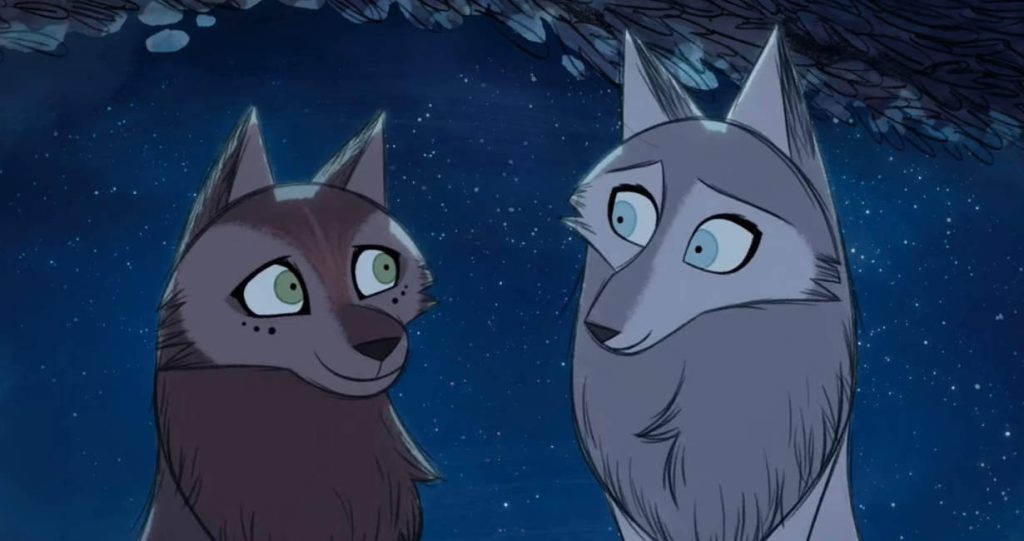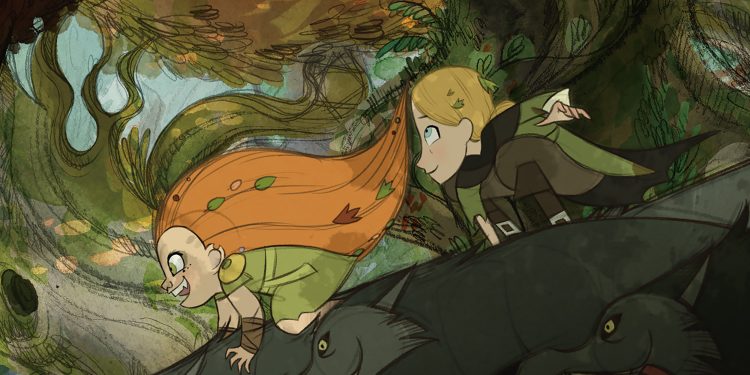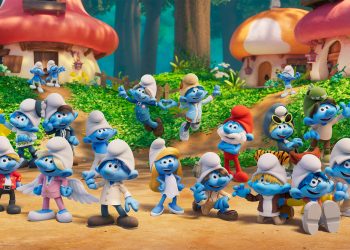The wolf has long stood as the great antagonist of our stories — cunning, menacing, capable of taking human form. It represents the disruptive force, the element that threatens to upend the established order. But what happens when we reverse the perspective? Wolfwalkers, the elegant animated feature directed by Tomm Moore and Ross Stewart, invites us to do just that: to look at the world through different eyes — the eyes of a wolf.
The third and final instalment in Cartoon Saloon’s trilogy inspired by Irish folklore — following The Secret of Kells (2009) and Song of the Sea (2014) — Wolfwalkers (2020) offers a stirring and evocative conclusion. Co-produced with Melusine Productions and supported by Apple TV+, the film is a coming-of-age tale and a story of metamorphosis, deeply rooted in Ireland’s history and mythos, and captivating in both its thematic depth and visual grace.
The setting is Kilkenny, 1650, under English occupation. Colonial power is personified in the figure of the Lord Protector — an allegorical portrayal of Oliver Cromwell’s Puritan extremism — who orders the destruction of the nearby forest and the eradication of the wolves, seen as symbols of native cultural resistance. Within this charged landscape we follow Robyn, the daughter of an English hunter tasked with clearing the land. Restless and curious, Robyn defies the boundaries imposed upon her and ventures into the woods, where she meets Mebh, a spirited young girl from the legendary tribe of Wolfwalkers — mystical beings who transform into wolves as they sleep. From their growing friendship emerges a deep bond that begins to question the certainties and roles dictated by the society around them.
The film tackles complex themes — colonialism, religious intolerance, the fear of the ‘other’ — through the symbolic power of myth.
But above all, it is a story about transformation. Not merely physical, but profoundly personal. Robyn’s gradual “wolfing” becomes a metaphor for inner liberation: a departure from a repressive, hierarchical system in favour of a worldview rooted in openness and harmony with the natural world. The wolf is no longer an enemy to be vanquished, but that which society suppresses — wild, free, and unbound.

Visually, Wolfwalkers distinguishes itself through entirely hand-drawn 2D animation. The film interweaves scratchy lines with delicate watercolour textures, using colour masterfully to draw a stark contrast between settings: the town is flat, rigid, and geometric, inspired by 17th-century woodcuts; the forest, by contrast, flows with organic rhythm and enveloping warmth. A shining example is the “wolfvision” sequence, which simulates the wolf’s sensory experience.
The environments were first constructed in VR and Blender, then each frame was hand-traced in charcoal, creating a hybrid technique that melds digital technology with traditional craftsmanship in a way that is exquisitely in tune with the film’s visual poetry.
Sound, too, plays a vital role in shaping the film’s modern fairytale atmosphere. The original score by Bruno Coulais, in collaboration with folk ensemble Kíla, underscores the emotional rhythm of the narrative with finesse. One of the most powerful sequences sees Robyn, in her wolf form, racing through the night to the haunting strains of Aurora’s Running with the Wolves — a moment of sheer emotional and aesthetic brilliance.

With this film, co-directors Tomm Moore — co-founder of Cartoon Saloon and driving force behind the Irish folklore trilogy — and Ross Stewart — long-time collaborator and former art director on The Secret of Kells, here making his feature directorial debut — have sculpted a luminous work of animation: a timeless creation that continues to resonate with meaning and beauty.














